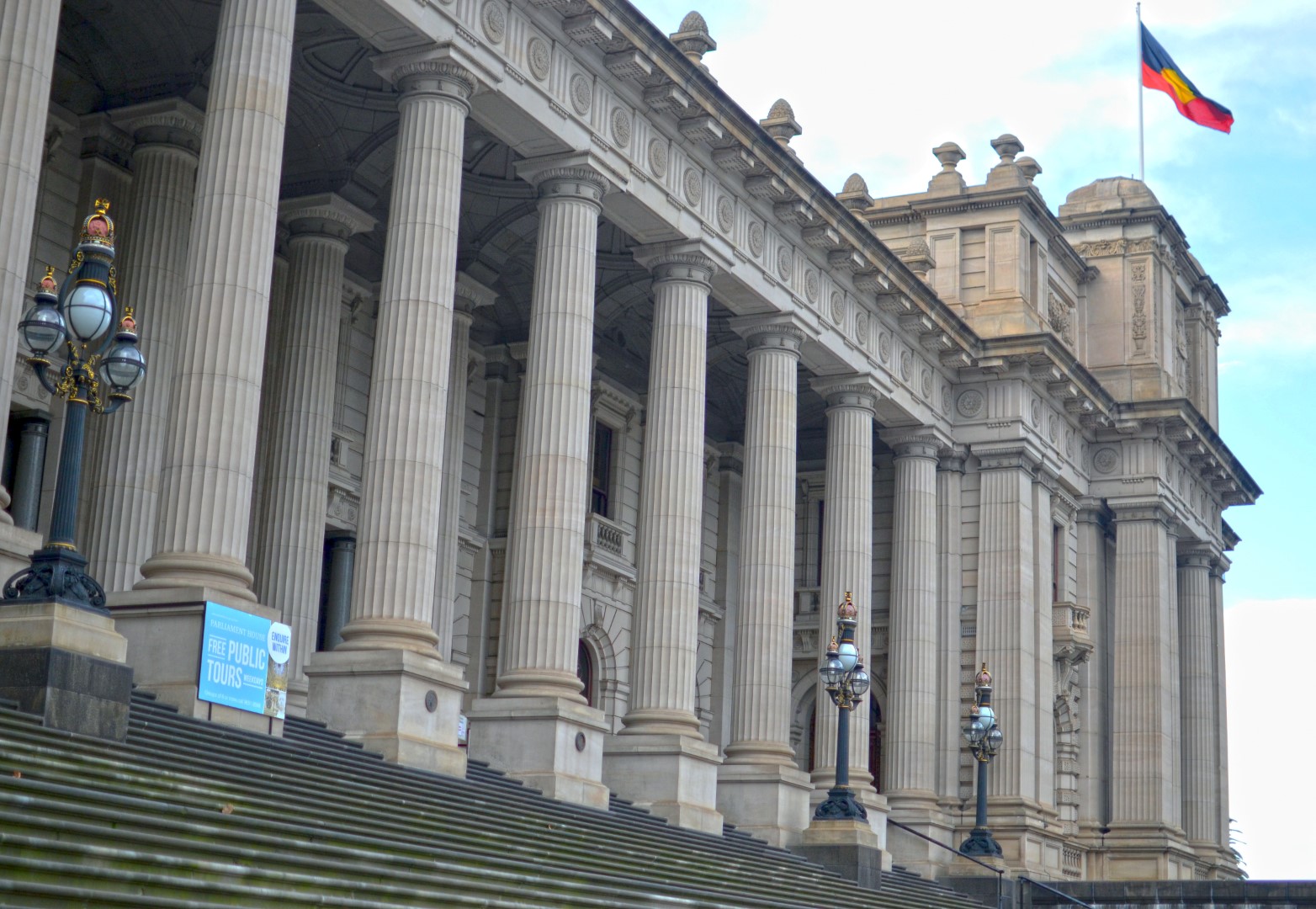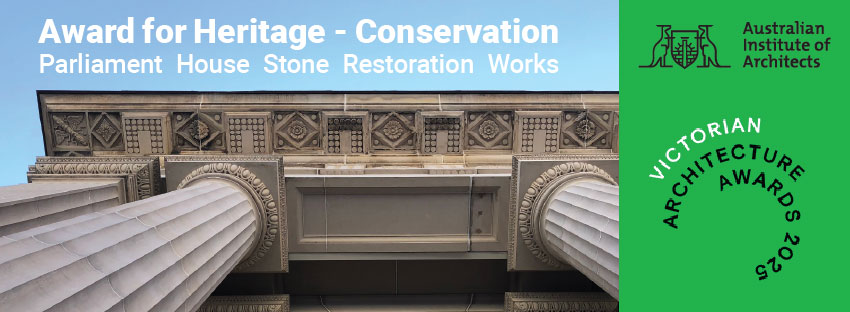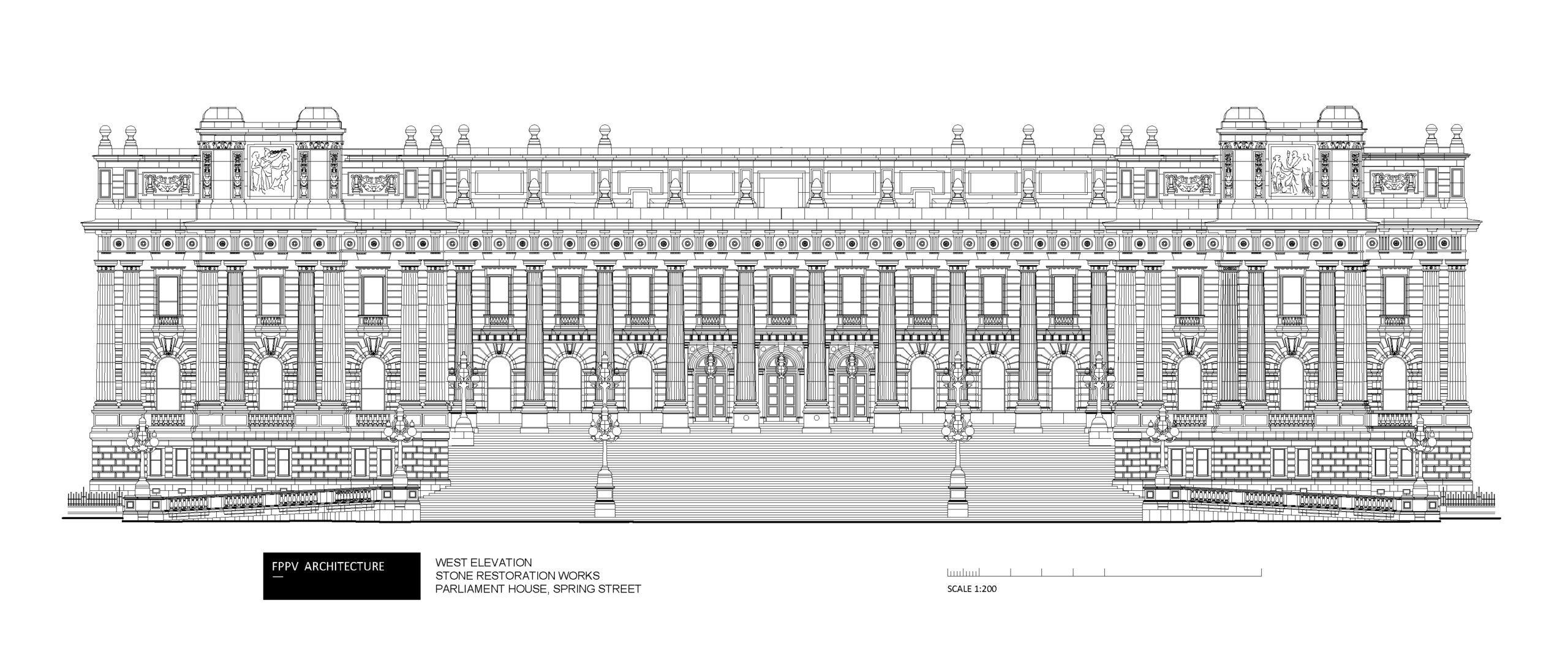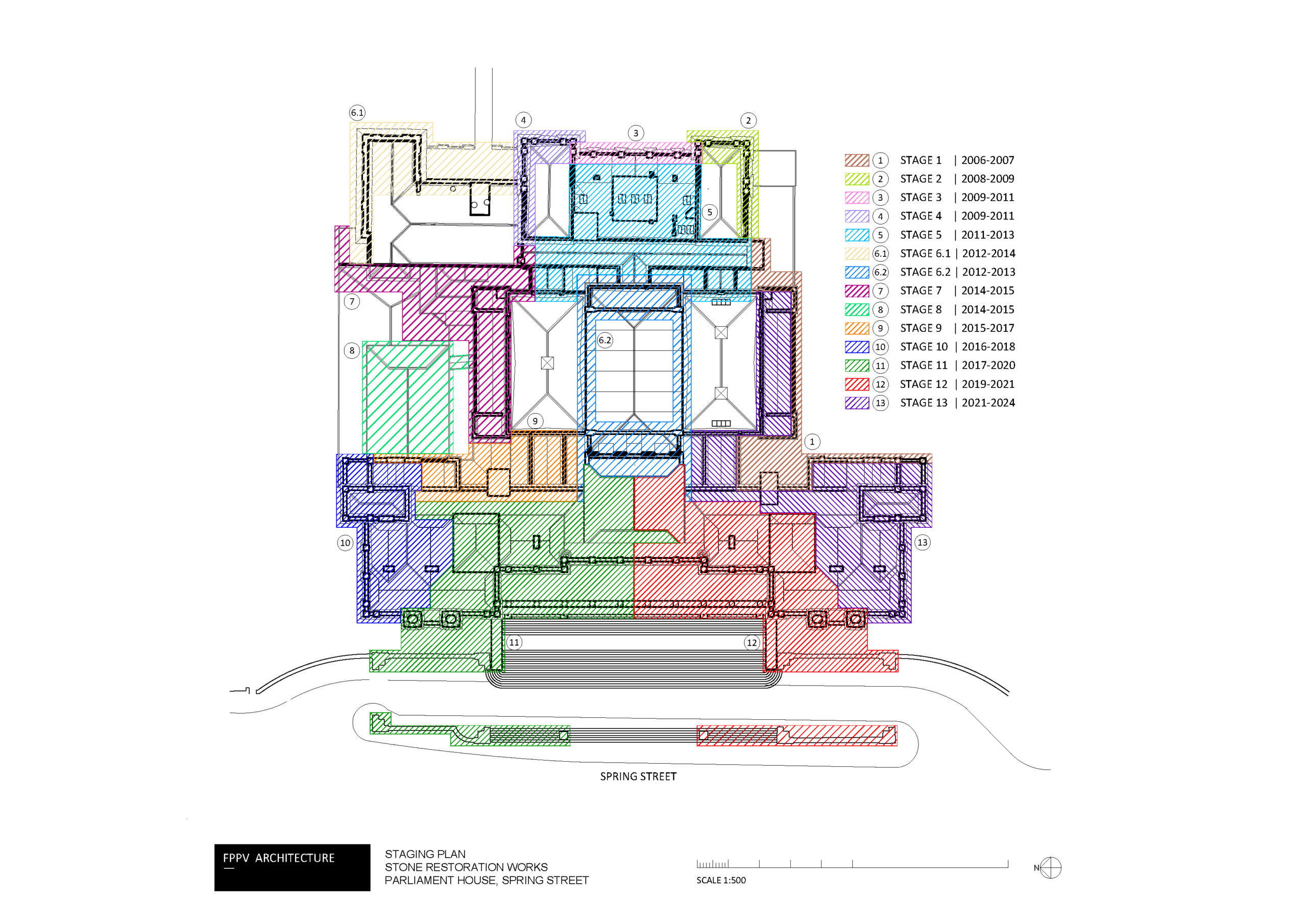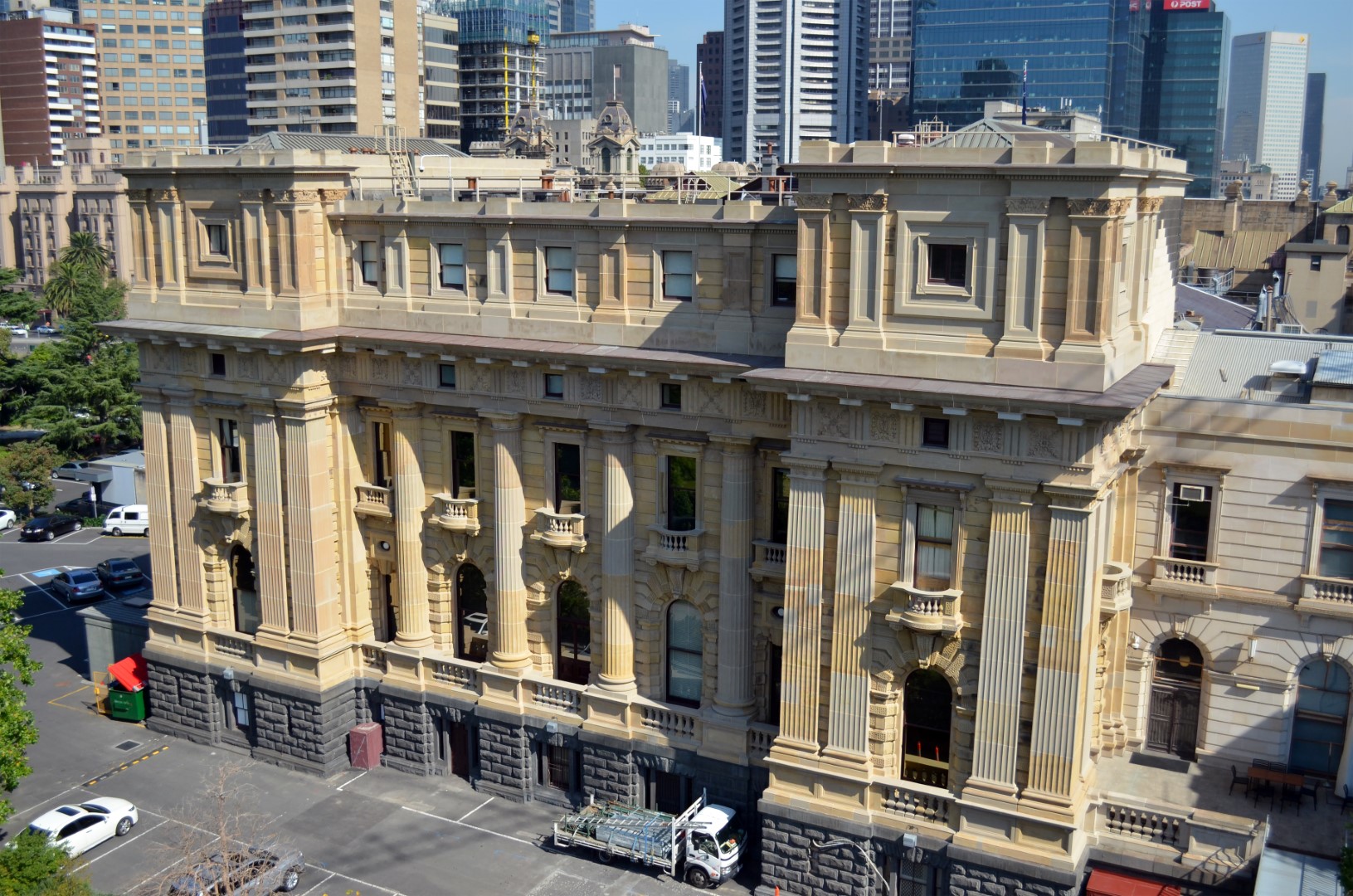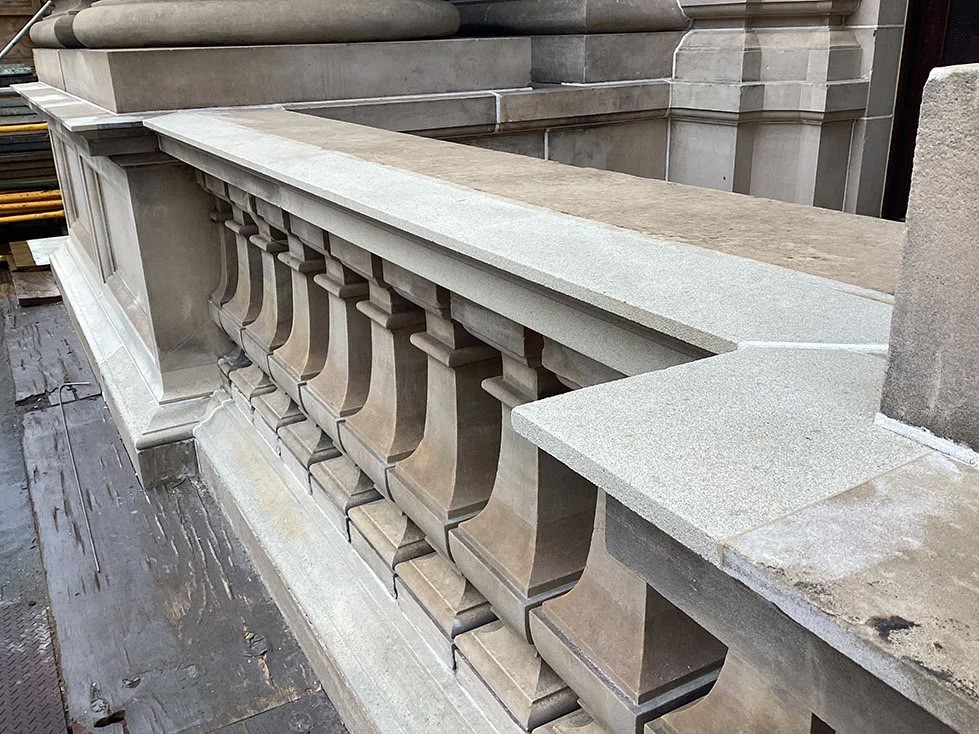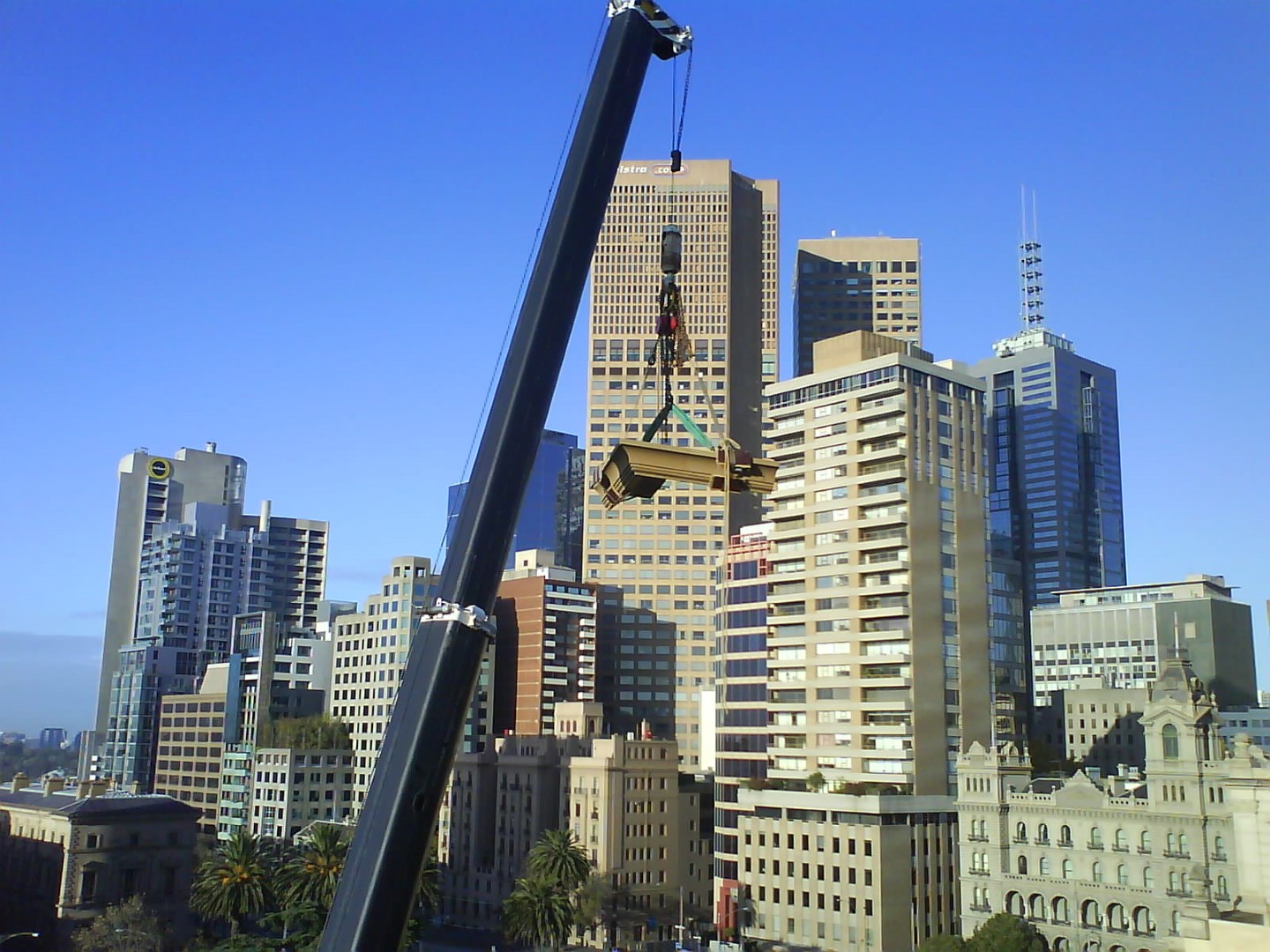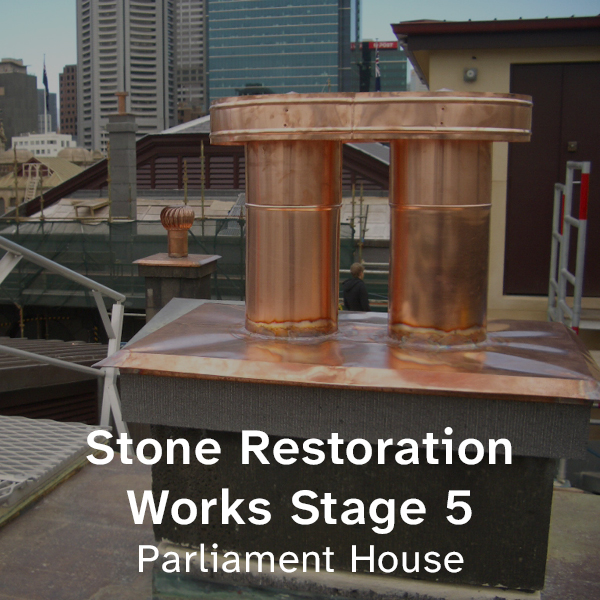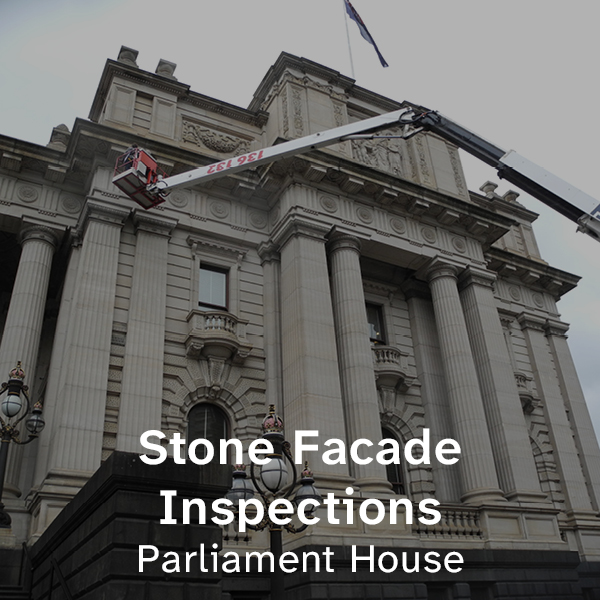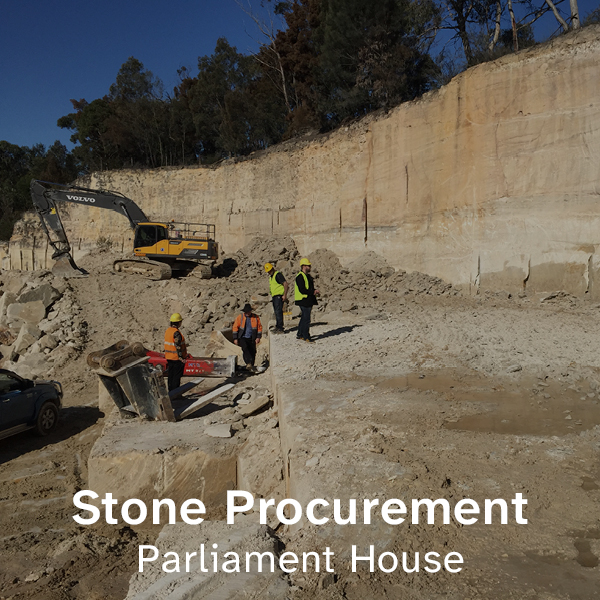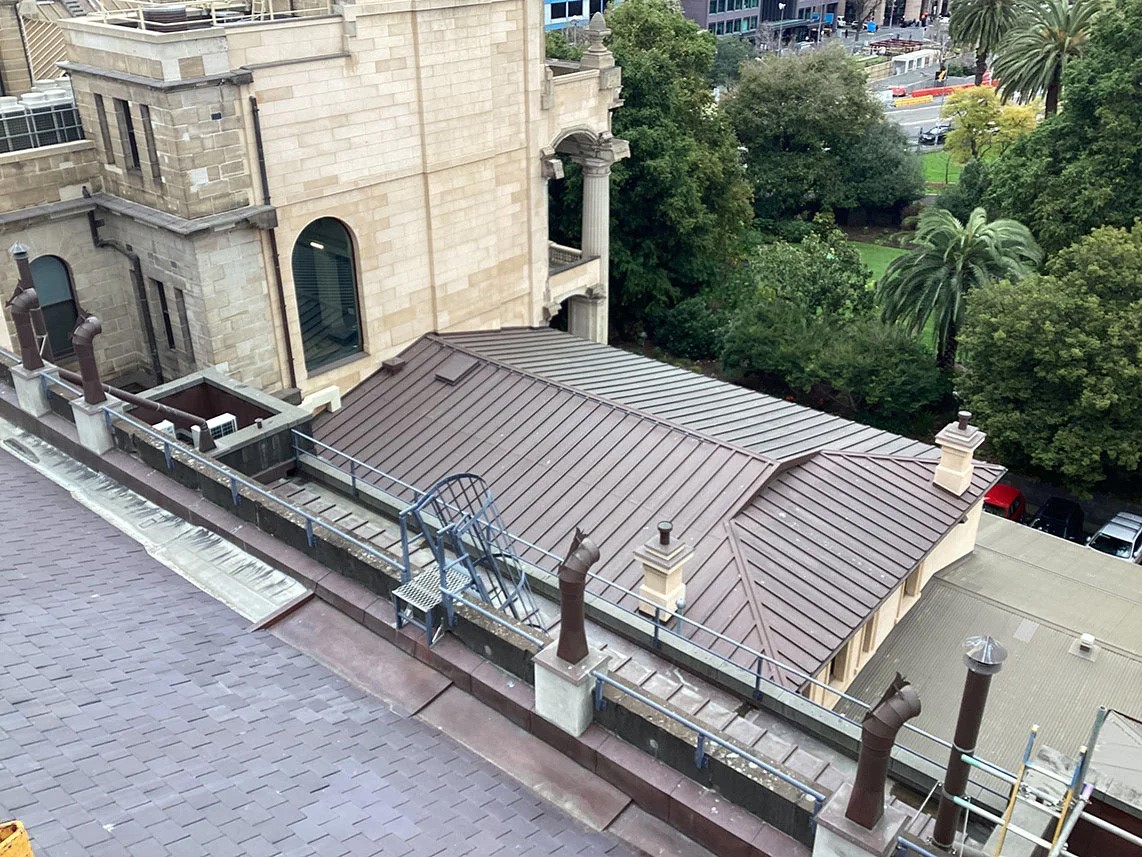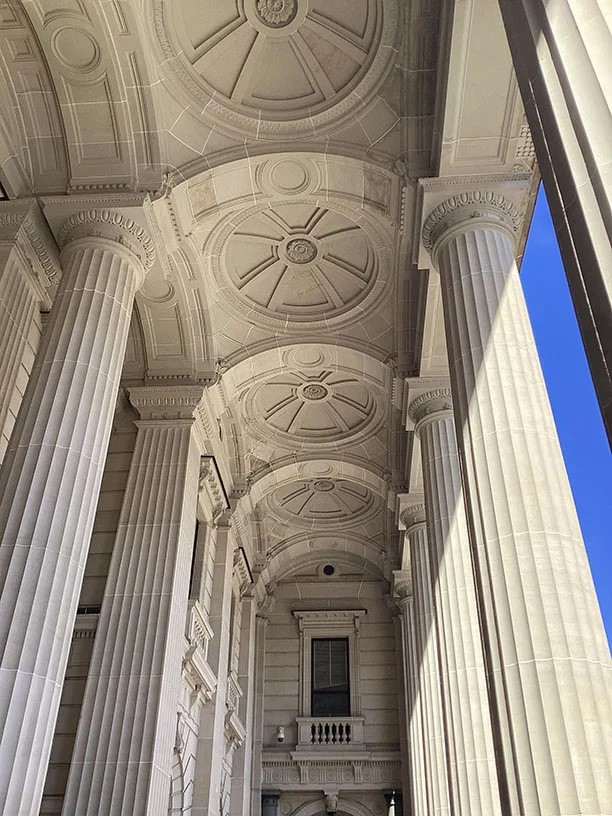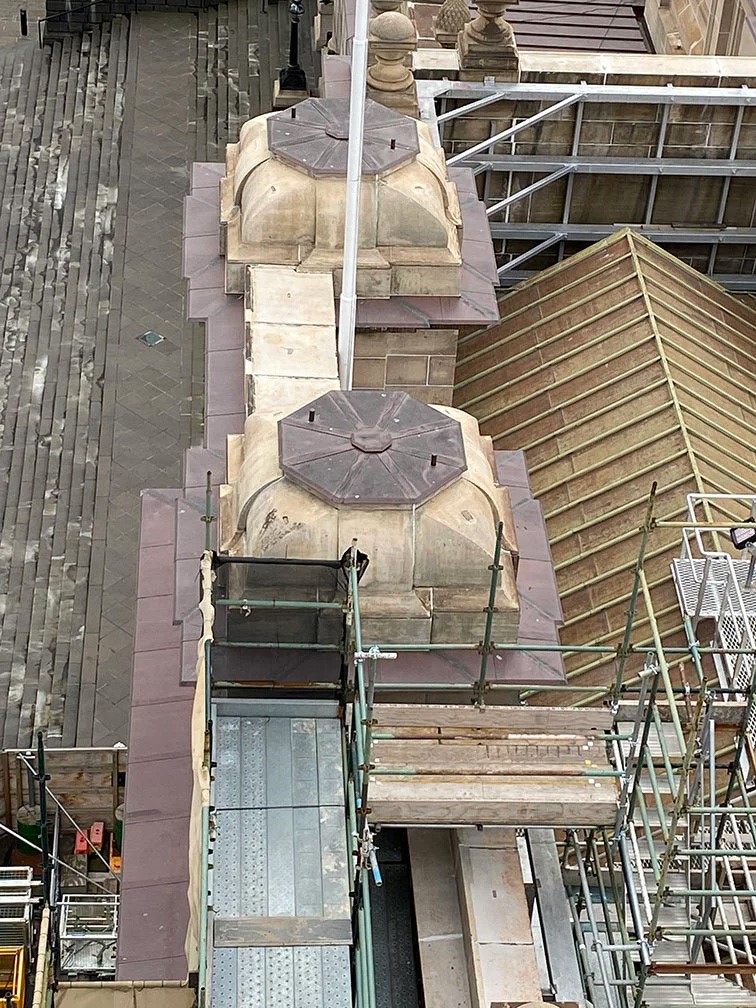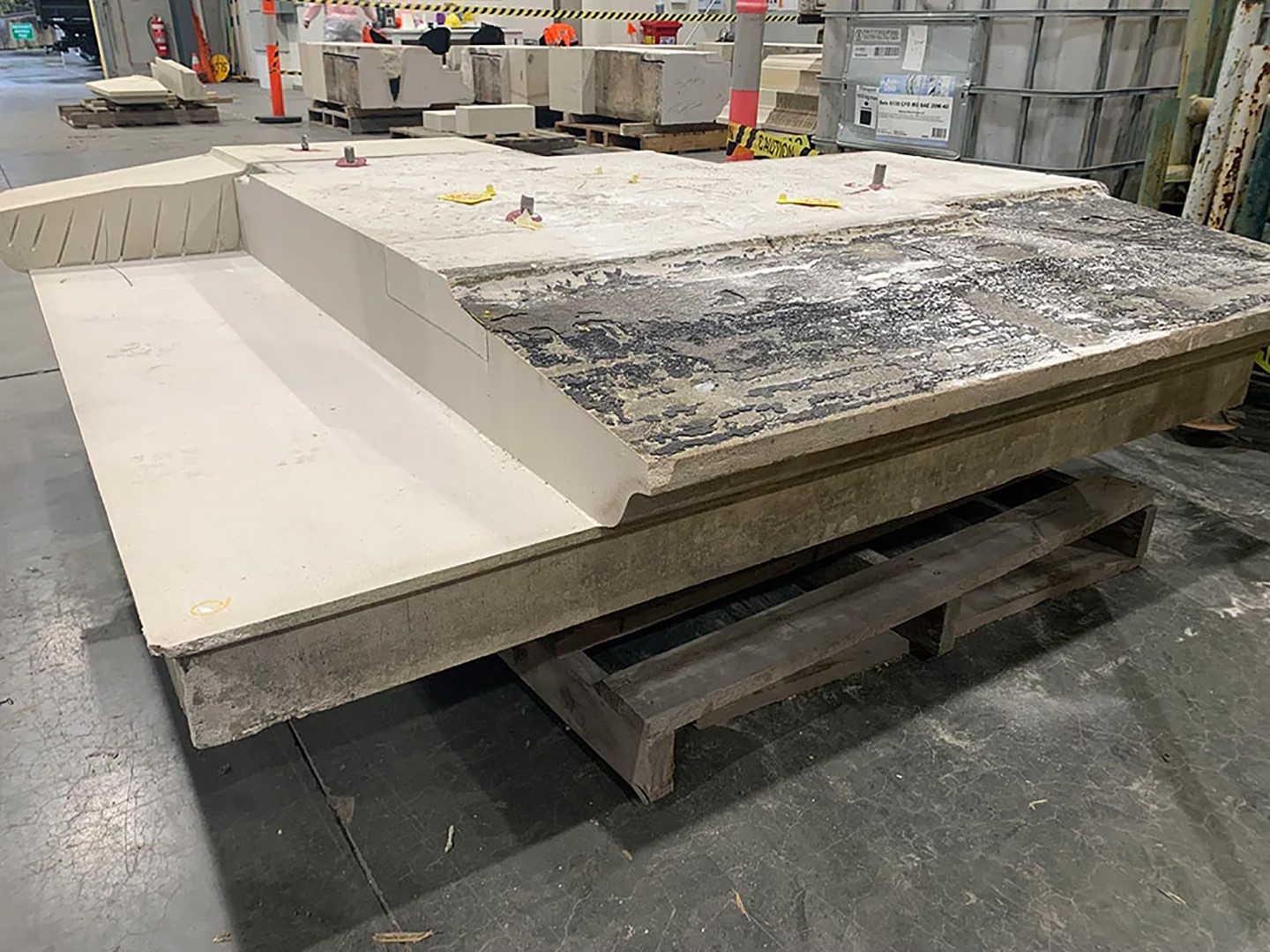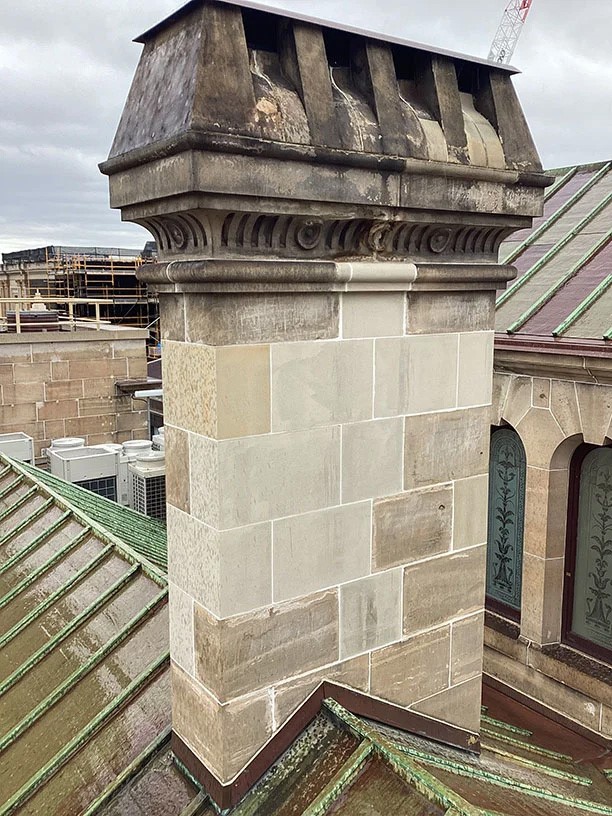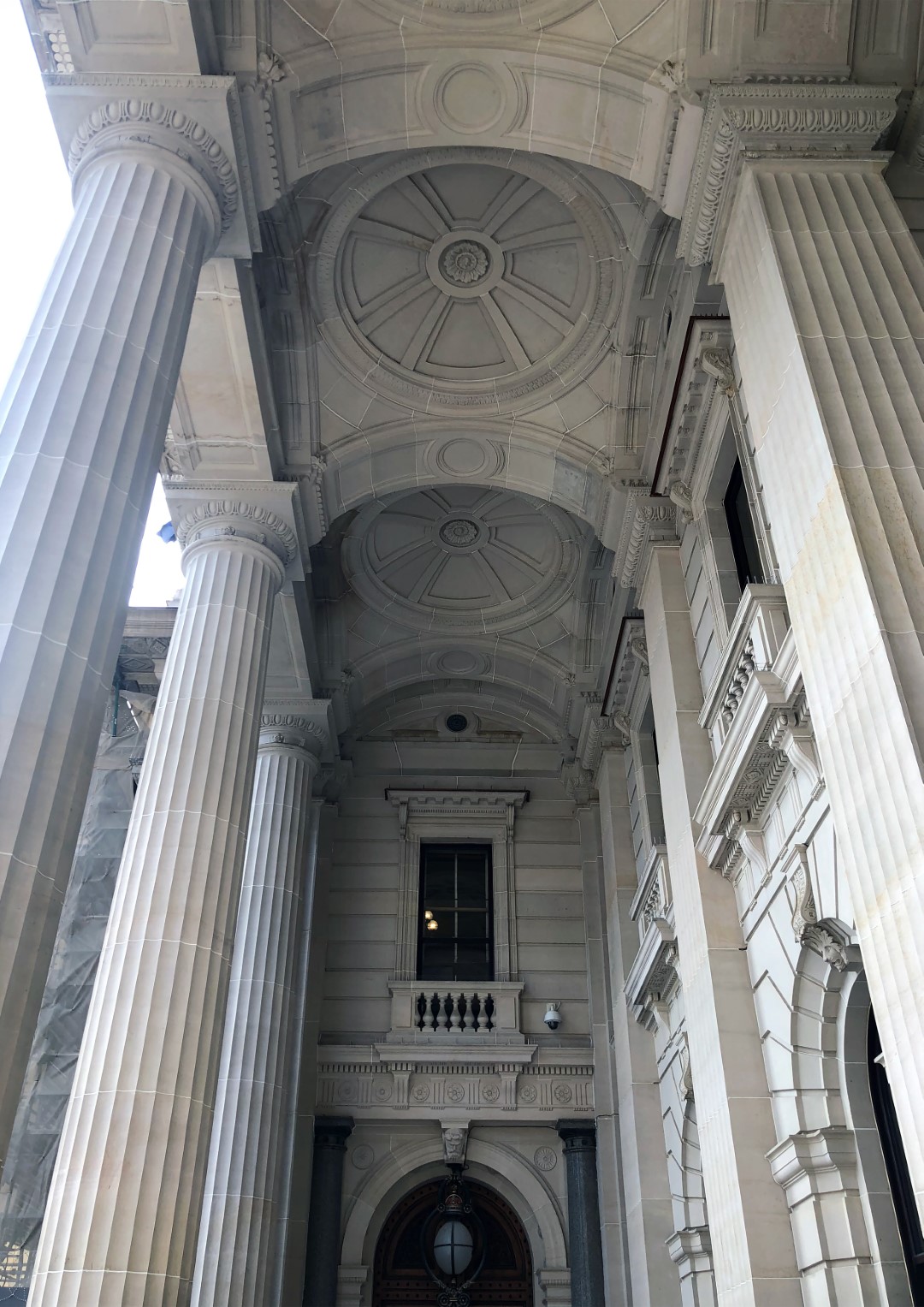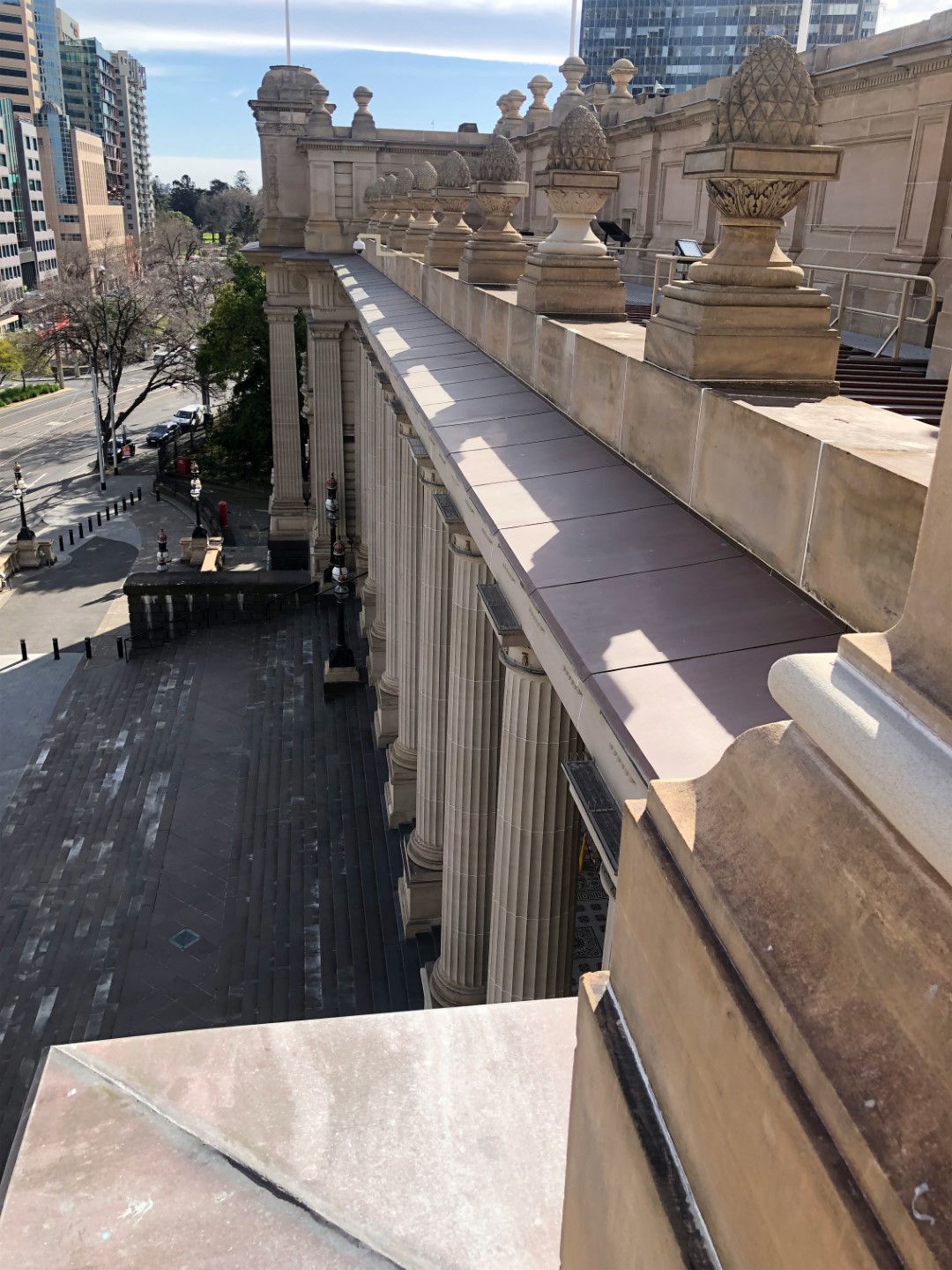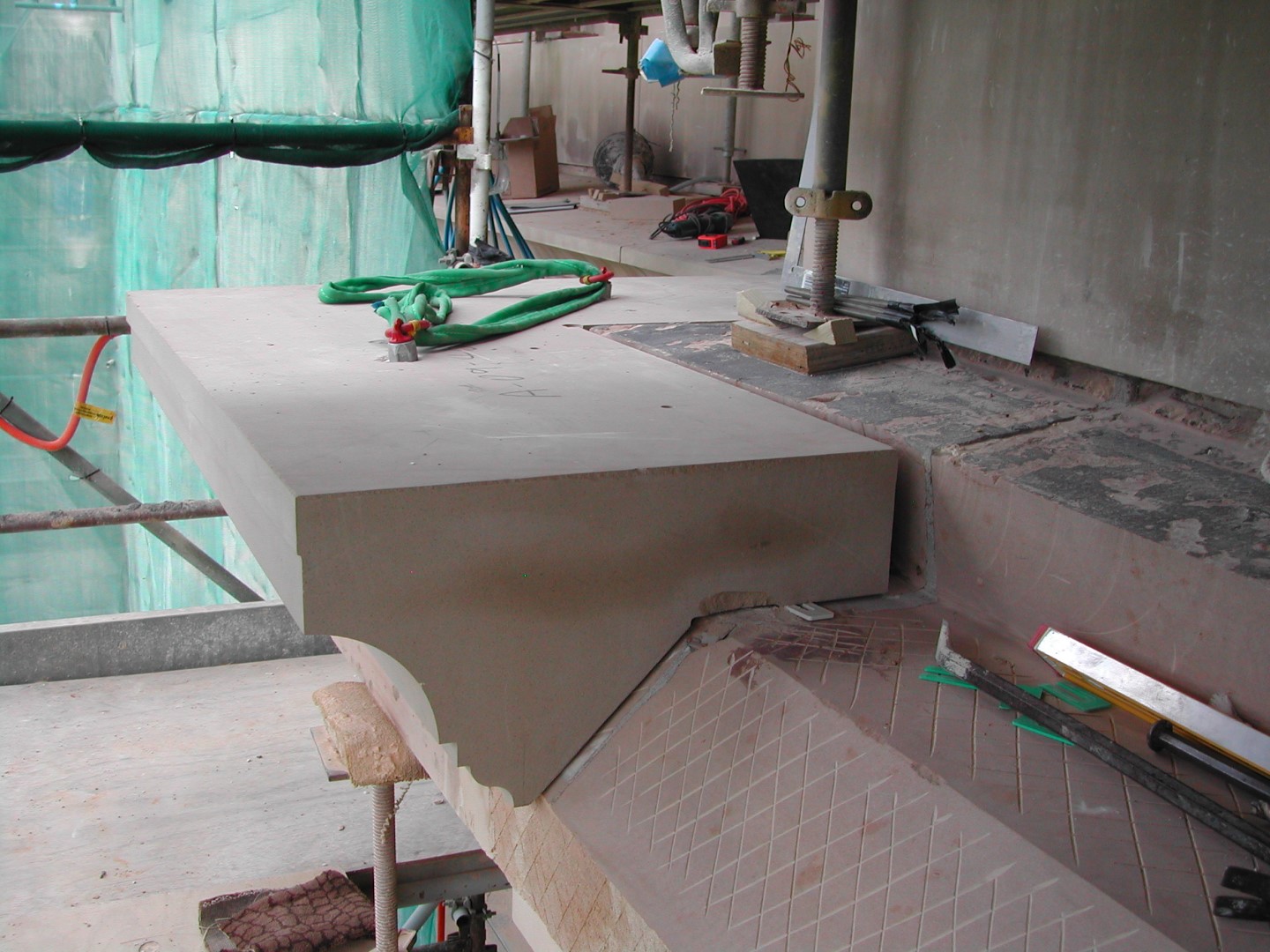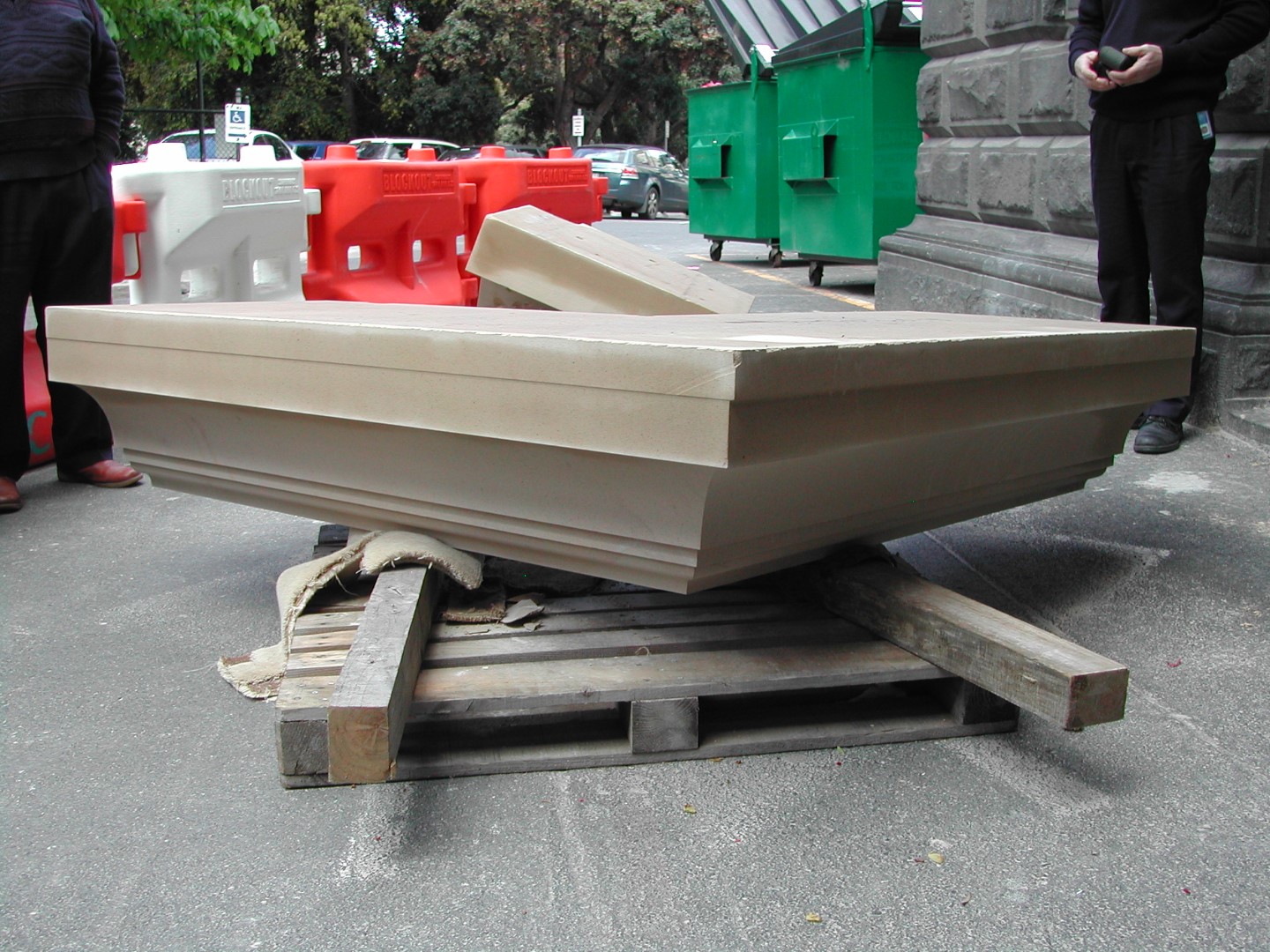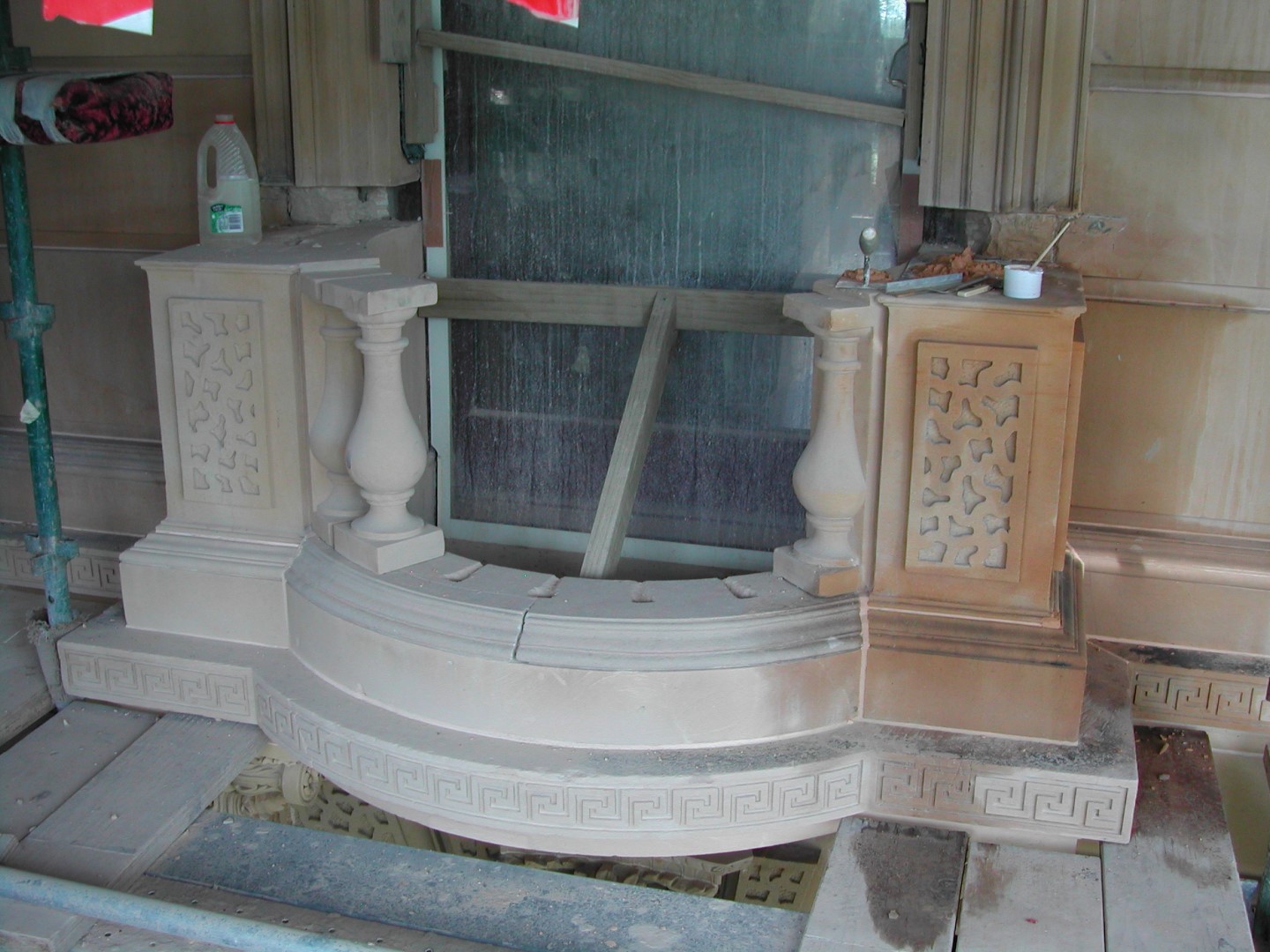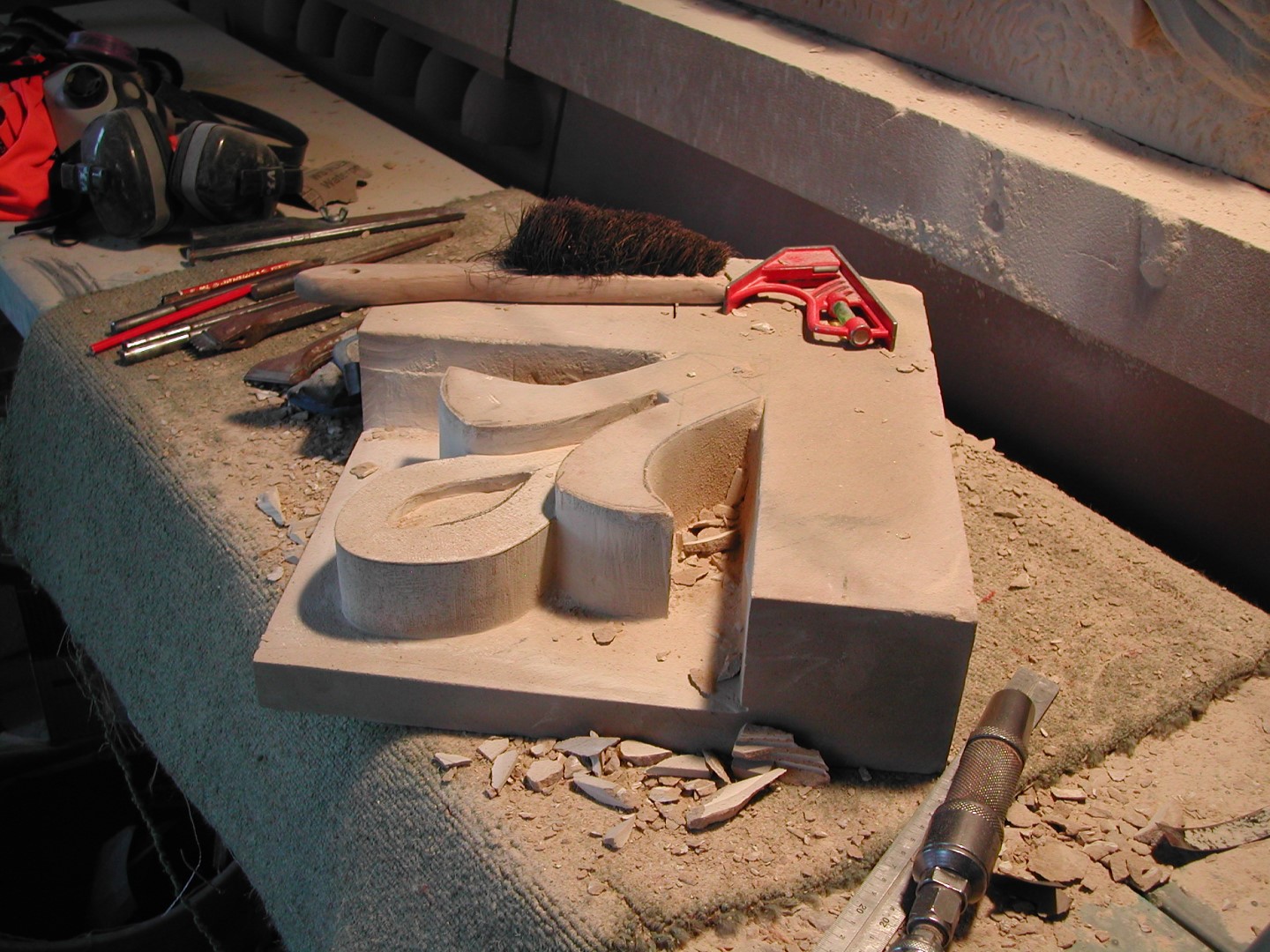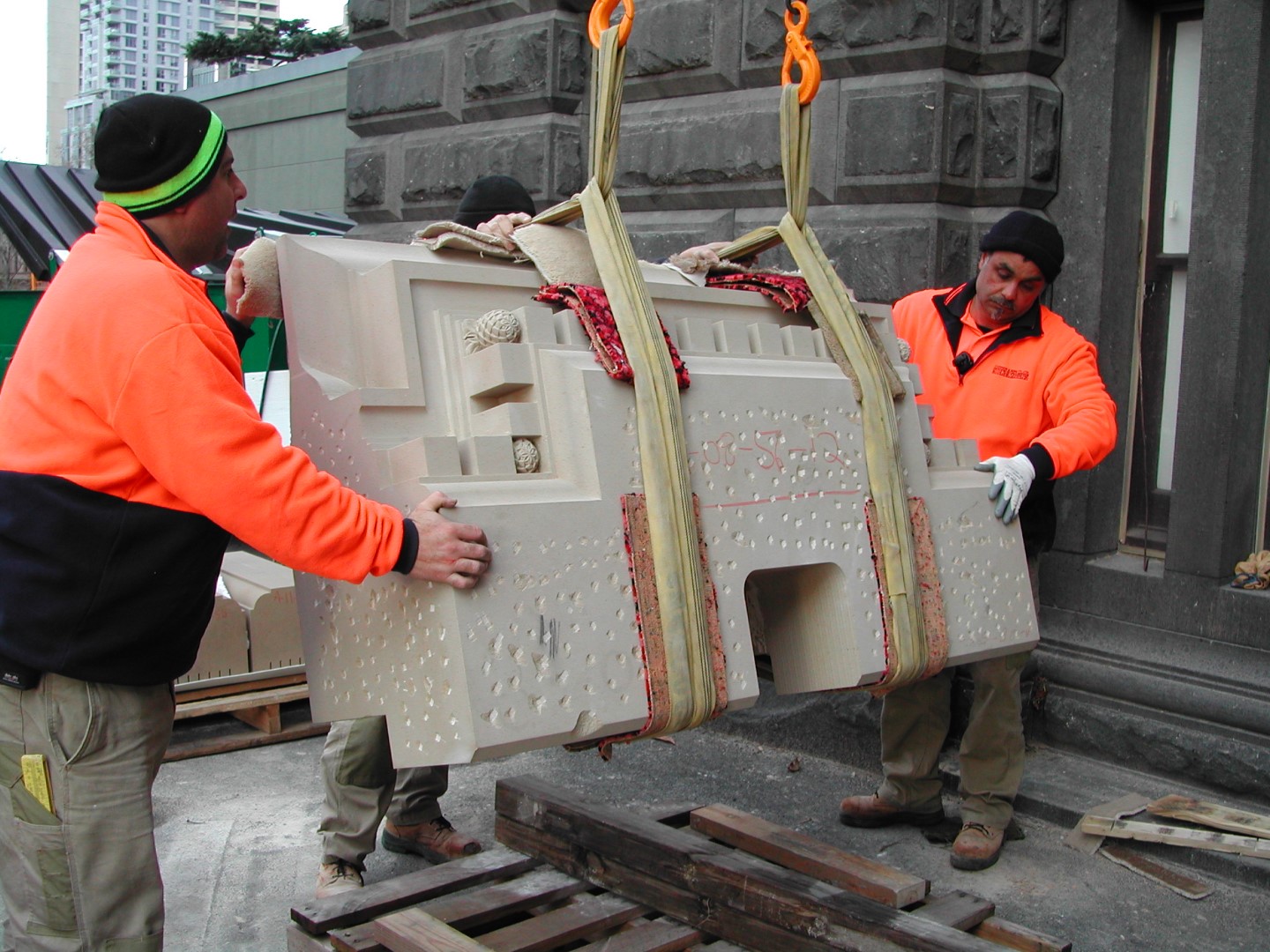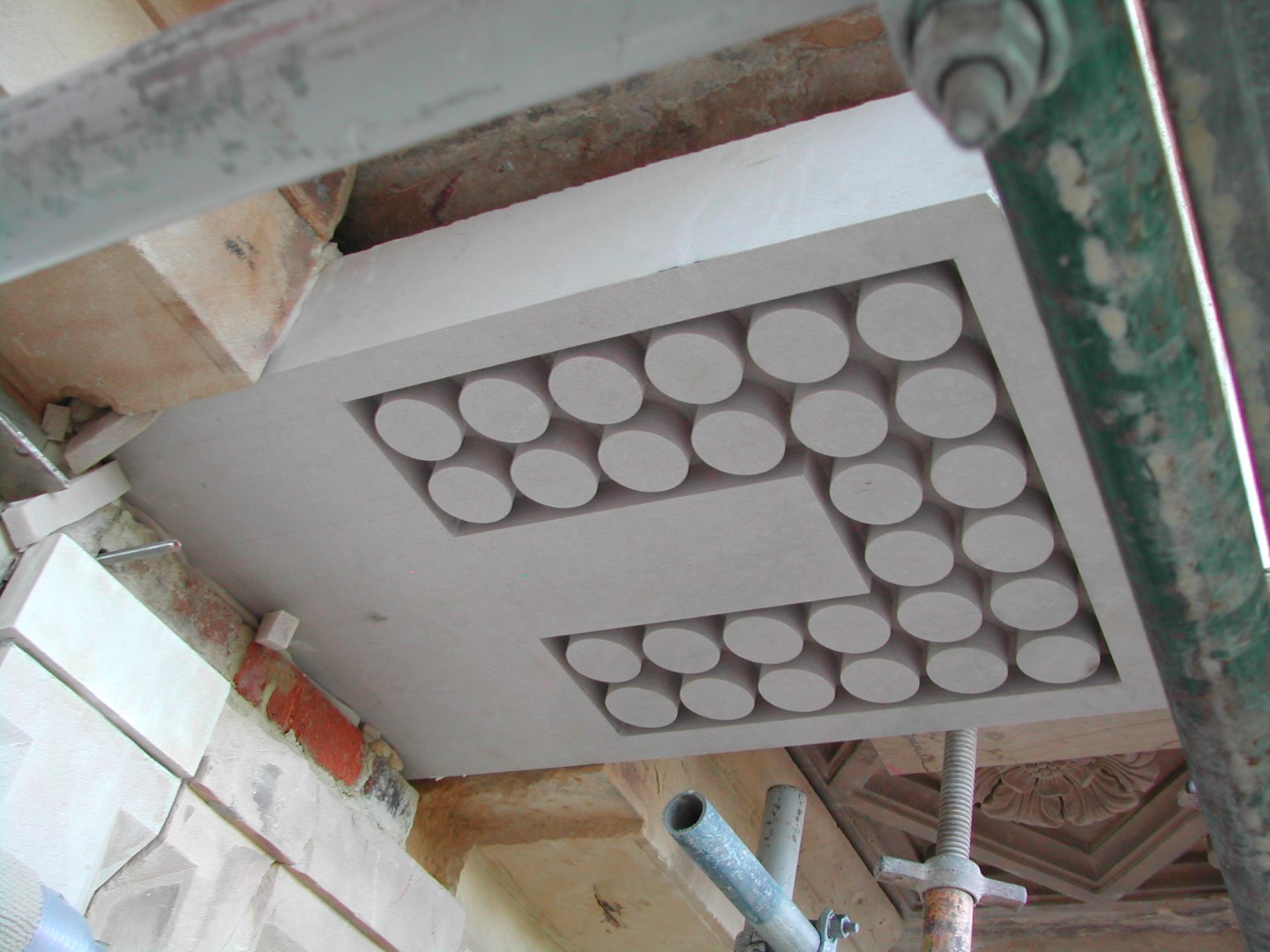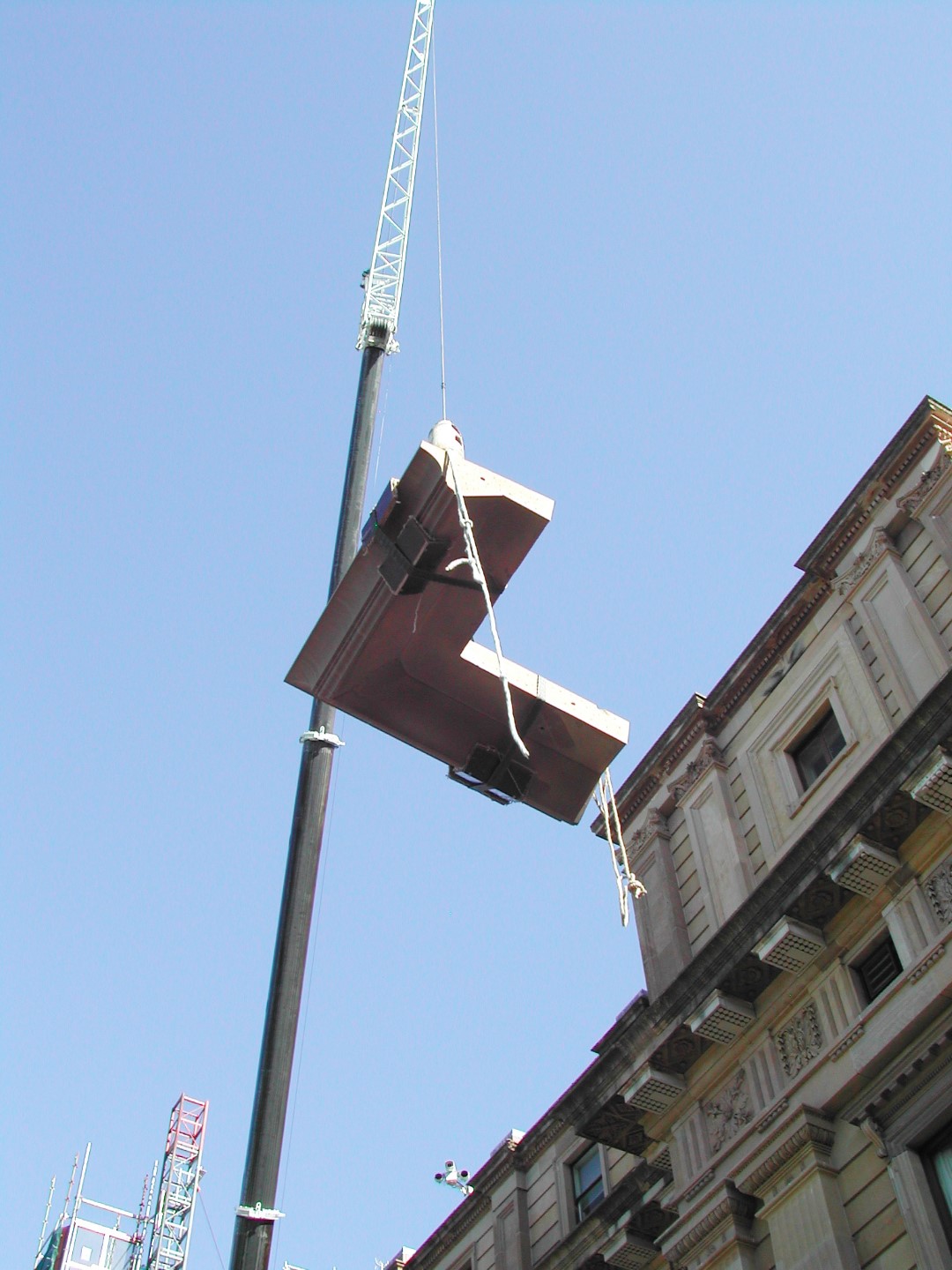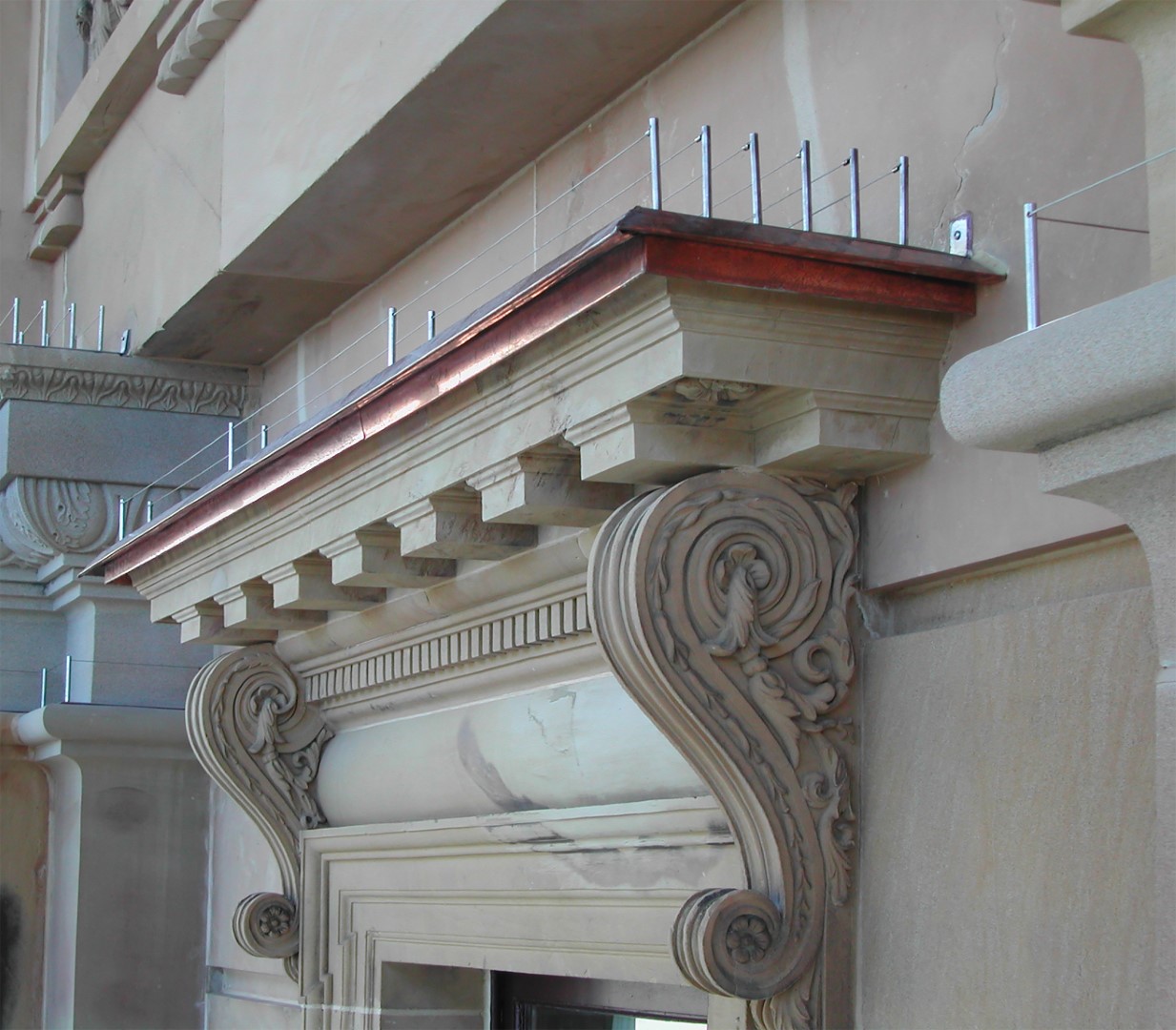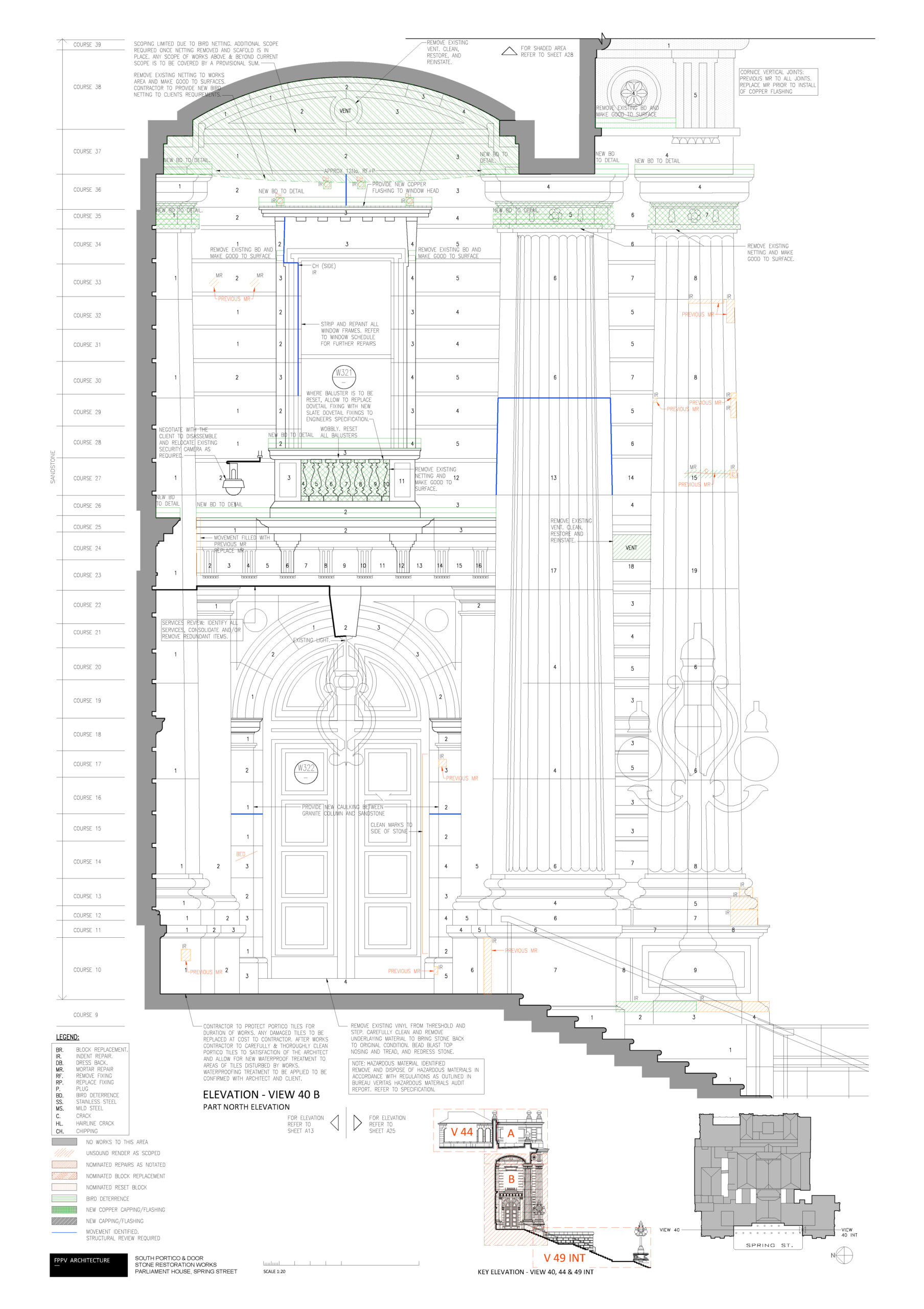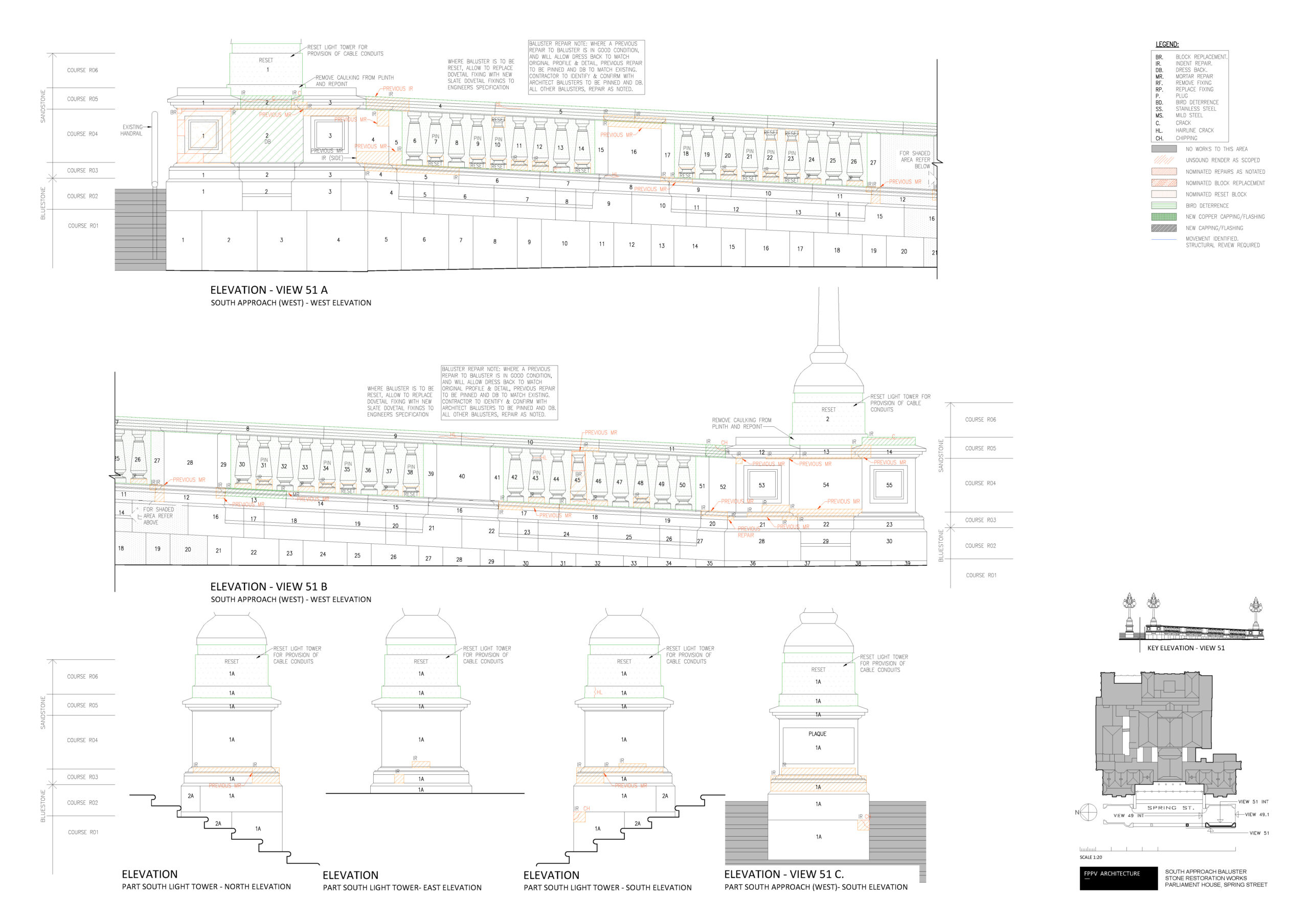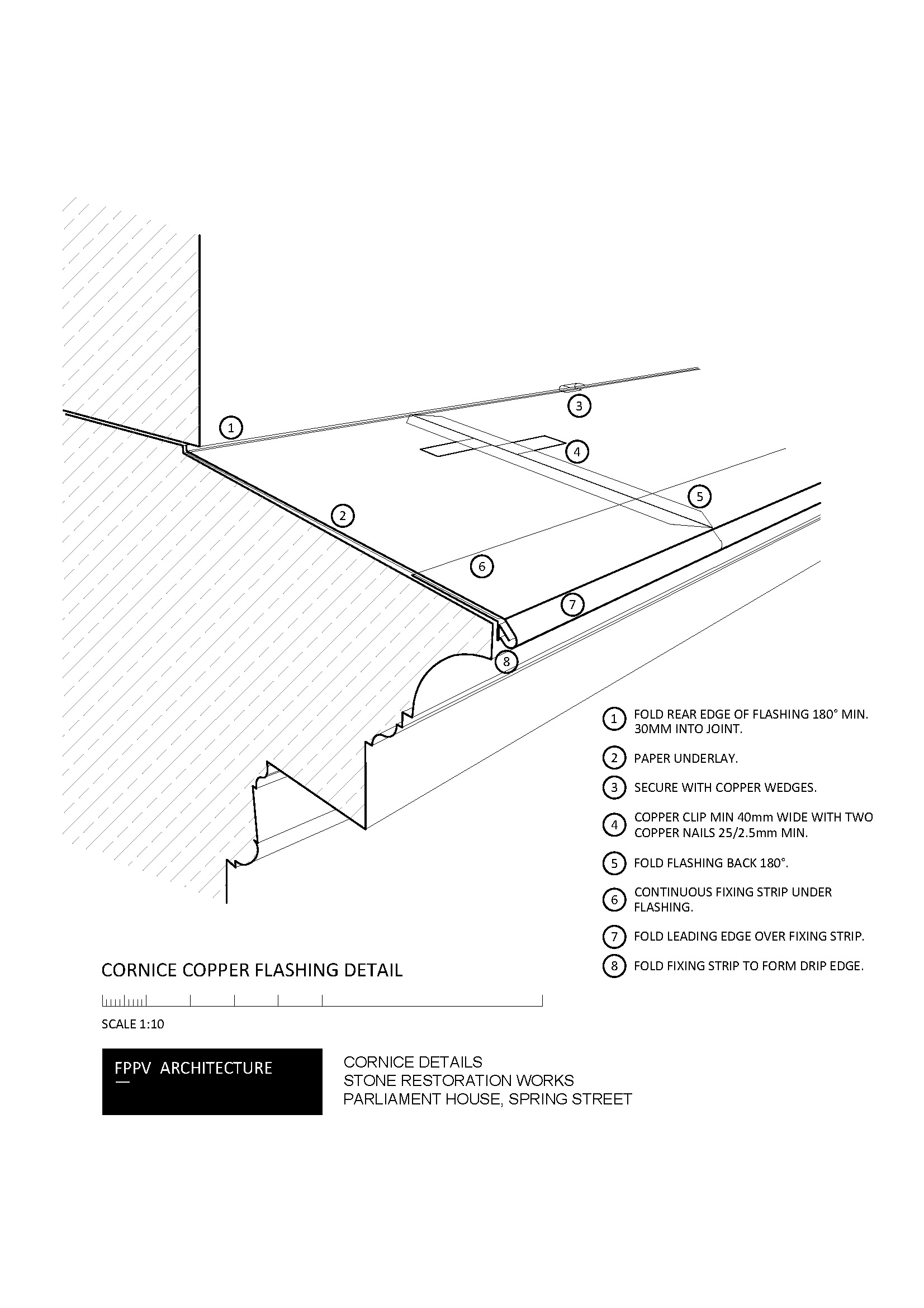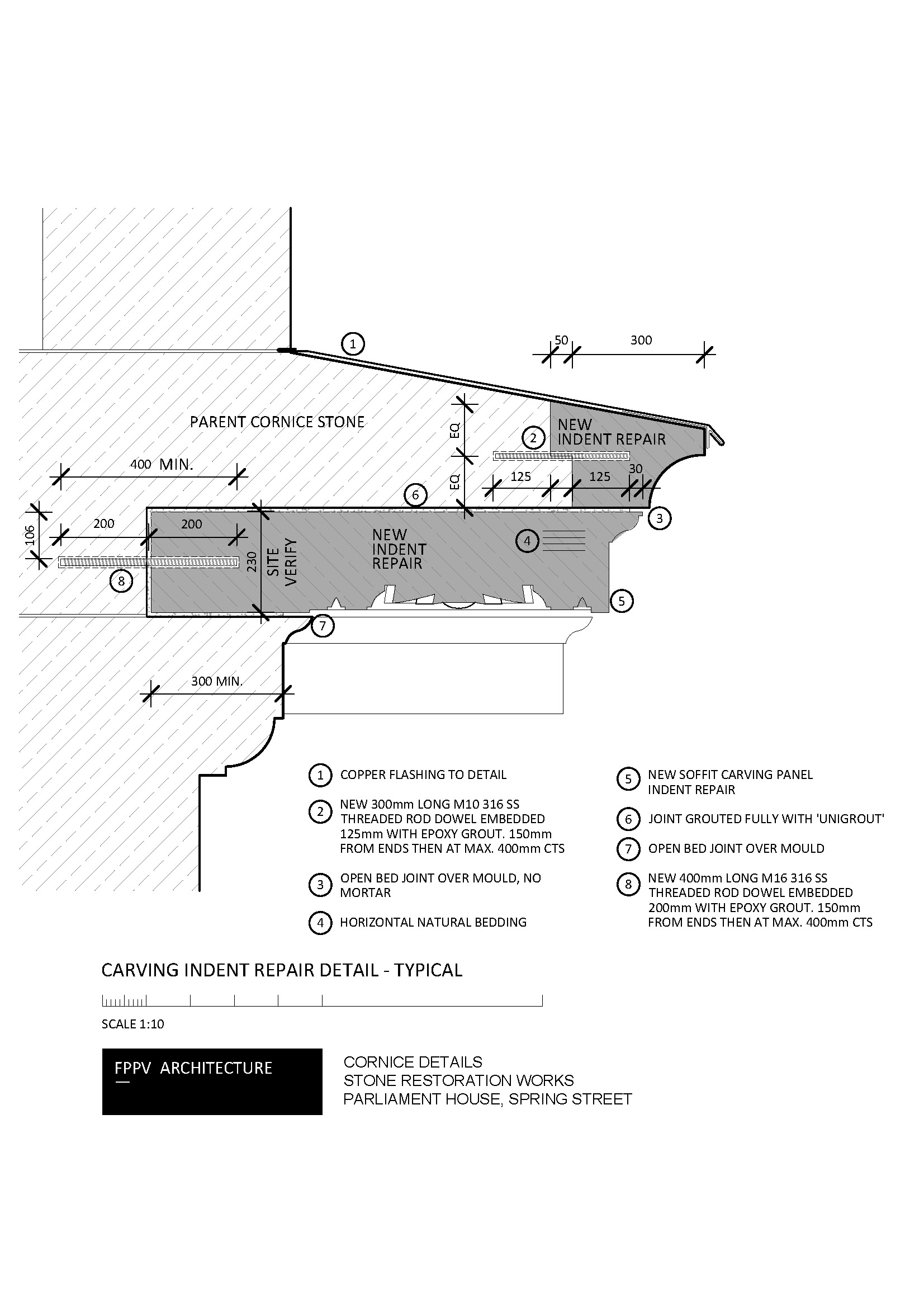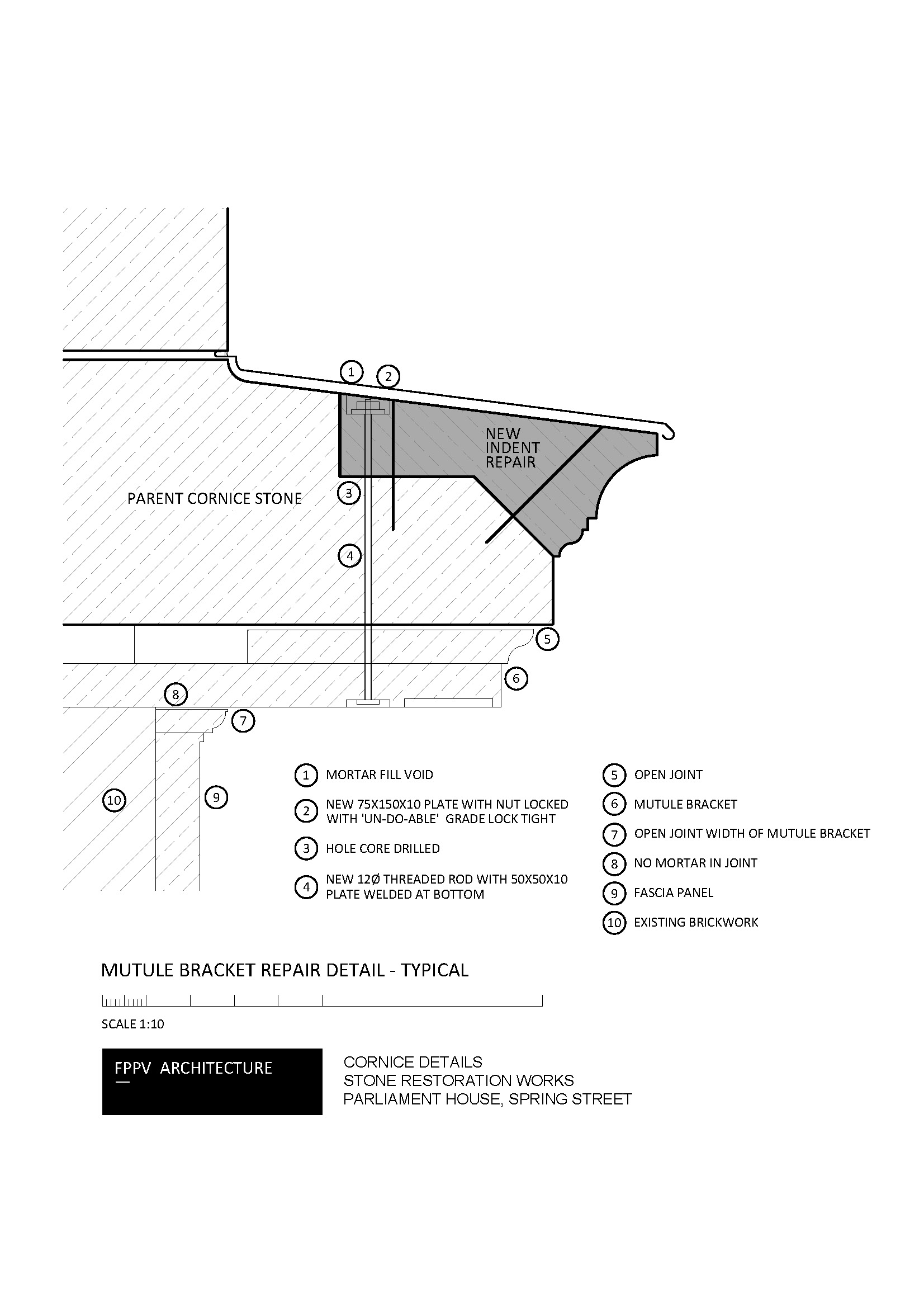FPPV were Principal Consultants for Stages 1 to 13 of the Stone Restoration Works at Parliament House, with a continuous program of works over the 18-year period.
We are honoured to have recieved the Award for Heritage – Conservation at the 2025 Australian Institute of Architects Victorian Chapter Awards.
Jury Citation:
In an age of BIM, Novated Contracts and Value Management, Parliament House Stone restoration project reminds us of the tradition of architectural craftsmanship and expertise. The building is a collage assembled over many years from 1854 to 1929, but by 2006 it was in a state of dangerous neglect. FPPV undertook the painstaking audit, documentation and administration of the repair works, halting further deterioration, fixing the leaks, and restoring the building, all while the built fabric was occupied. The project had 13 stages over18 years. There was tenacious research into stone types. Each repair was resolved by close viewing and measurement, often high up on the building, and referenced to Peter Kerr’s 1850s drawings. FPPV’s own extensive drawing set is a delight to see – detailed, meticulous and orderly. The project is an exemplar of the persistence and collaboration, skill and passion of the client, architectural and craftsman team to preserve this significant public institution.
Restoration of the Spring Street building commenced in 2006 and has involved works associated with sandstone and bluestone, render, metalwork, carpentry, joinery and services consolidation. FPPV has completed numerous reports, documents and discussion papers regarding the maintenance, safety and future stages for stone restoration work program.
Designed by John George Knight and Peter Kerr, Parliament House in Victoria has been a significant historical and political landmark since its construction began in 1856. Despite being the seat of the Victorian Parliament since 1856 and Australia's Federal Parliament between 1901 and 1927, the building was never completed and faced years of neglect, especially after the Public Works Department Construction Group was dismantled in 1987.
By the late 1990s, the building's condition had severely deteriorated due to a lack of maintenance and political will. Initial efforts in the mid-90s to address superficial stone deterioration proved insufficient. In 2005, the Department of Parliamentary Services (DPS) was created, and in 2006, a significant incident where a large section of cornice stone fell prompted a comprehensive review of the building's condition.
FPPV was engaged to conduct annual stonework audits and address the root causes of deterioration. The project aimed for a 50-year lifespan, focusing on a holistic restoration approach. This included addressing water ingress, structural movement, cleaning and repointing facades, dismantling and resetting parapets and chimneys, replacing roofs and rainwater goods, restoring doors and windows, and removing redundant services and fixings.
Our project utilised a mix of modern technology with traditional craftsmanship. Utilizing multi-axis CNC technology, stonemasons milled stones to approximate sizes before delivery, while intricate carving and final dressing were meticulously completed by hand using century-old techniques. To prevent water ingress, copper flashings were added to cornices and parapets, and new details for fixing copper roofs, gutters, and flashings were developed based on traditional techniques. Throughout the project, we were supported by specialist heritage engineer Mark Hodkinson and a heritage advisor from the NSW Government Architect, both experts in sandstone buildings.
Recognizing the health risks associated with silica early on, we implemented comprehensive safety measures, including vacuum stations with HEPA filters for daily site cleaning and special cutting booths to minimize noise and dust.
A key aspiration was to transfer specialist heritage skills to the next generation, employing several stonemasonry apprentices who dedicated up to 15 years to the project.
The Stoneworks Restoration has made a palpable difference to the way Parliament House operates and is maintained. The building is now watertight and significant deterioration caused by age and neglect has been halted and reversed.
In addition to reducing the ongoing expenditure for maintenance, the project has restored the building to the original architectural vision ensuring the Parliament House building will remain a source of pride for all Victorians and continue to host Members of the Victorian Parliament while they undertake their important legislative role in our democracy.
Project Team: Paul Viney | Giulio Lazzaro | Matthew Denier | James Hose | Mark Humphrey | Andrew Dunin-Labedzki | Sarah Ambrogio
Consultants: BSGM | Henge | Connor Pincus | Mark Hodkinson | Rodney Vapp & Associates | Dyson Holland & Associates | WT Partnership | NSW Government Architects Office | Stone Initiatives
Contractor: O'Connor & Sons Stonemasons
Project Value: $88.9 million
Tags: Heritage

